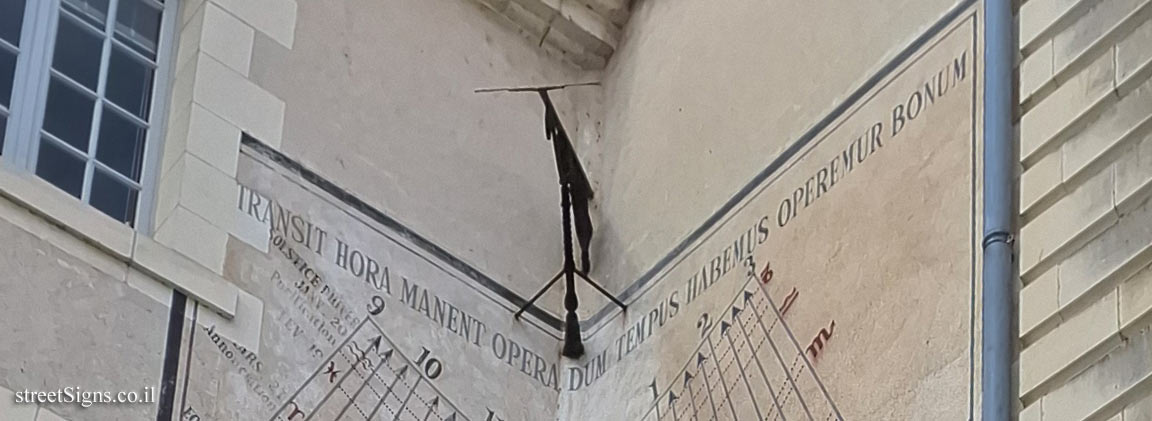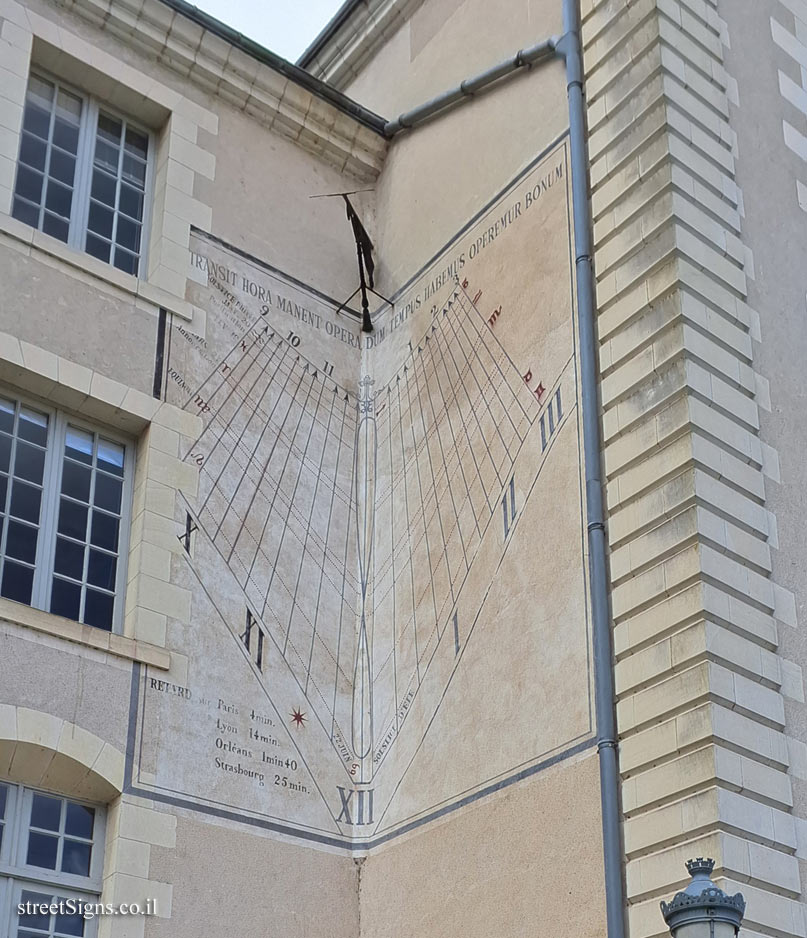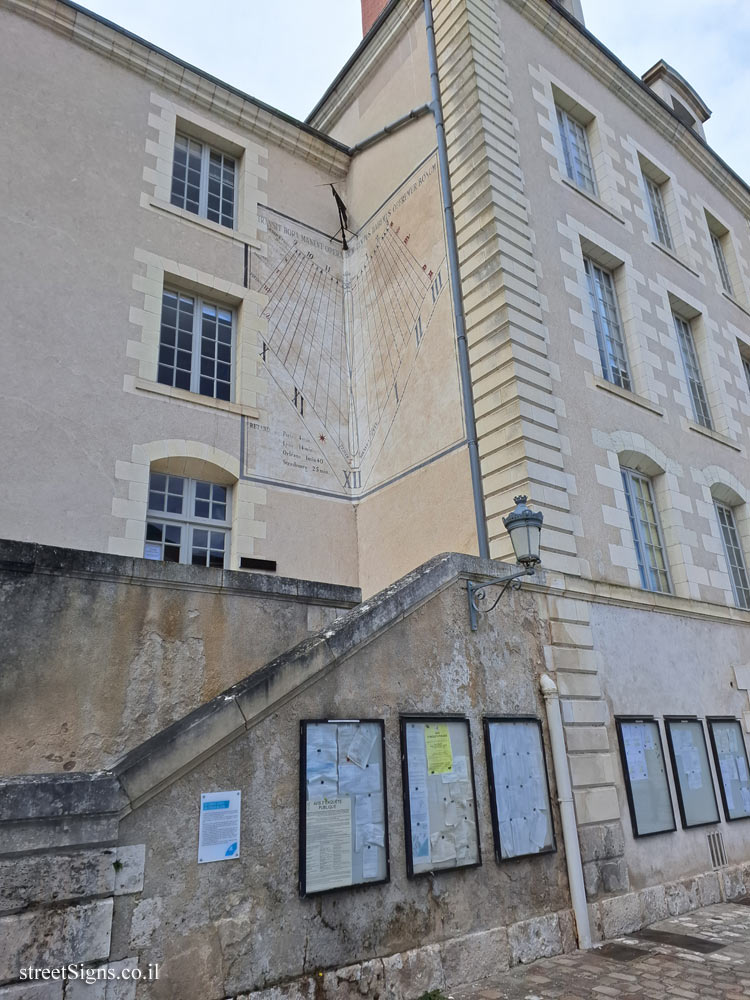The 19th century sundial is located near the town hall of Blois
The Latin text at the top of the clock reads: TRANSIT HORA MANENT OPERA DUM TEMPUS HABEMUS OPEREMUR BONUM
[translating]
"The hour passes, the works remain, as long as we have time, let us use it to do good"
 Click for a larger image
Click for a larger image The sundial was taken on the same day
 Click for a larger image
Click for a larger image In the next picture you can see the place of the sign and the special location of the clock (in the corner formed by two buildings)
 Click for a larger image Translation of the text on the sign
Click for a larger image Translation of the text on the sign:
The sundial of the Town Hall The creation of the sundial, in what was then the courtyard of the bishopric, dates back to the time of Monseigneur Pallu du Parc, bishop of Blois (1850-1877). It was restored in 1985.
The Latin motto at its top means “The hour passes, the works remain, while we have time, let us use it to do good.”
This “true” time calculated according to our position in relation to the sun varies from one place to another, hence the differences indicated at the bottom left. The names of religious holidays (Annunciation, Purification) are painted on the left side of the dial.
Formerly there were two (and perhaps four) other feasts of the Virgin: the assumption (August 15), the nativity (September 8), the presentation (November 21) and undoubtedly the visitation (May 31). The annunciation being on March 25 and the purification on February 2. We could also find, at the bottom right, the cities located further west of Blois and presenting delays compared to Blois: Tours: 1.30 min, Brest 25 min.
The development of the railway put an end to the use of solar time in 1891 for a national common time.
[Emblem of Blois]

 Click for a larger image
Click for a larger image  Click for a larger image
Click for a larger image  Click for a larger image
Click for a larger image